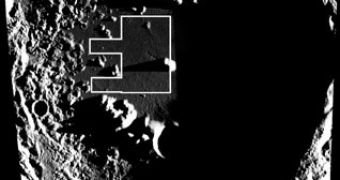Images recently sent from the Japanese Moon orbiter KAGUYA (Japanese for “SELENE”) show that the volcanic activity on the far side of Earth's natural satellite may have ended later than scientists previously thought. Latest estimations appreciate that the last such activity occurred in the region about 2.5 billion years ago, while on the closer side, its counterpart took place as late as 1 billion years back. These deductions may provide new clues on the way in which the Moon evolved over time.
According to the general scientific opinion, a Mars-sized planet collided with our own, sending a part of its molten material in Earth's orbit and forming the Moon upon cooling. Throughout the following billions of years, meteorites and volcanic activity bursts shaped its surface. The most prominent features that resulted from these events are the lunar maria (plural from mare, meaning “sea” in Latin – since the first astronomers actually mistook them for seas from the distance), the large and dark basaltic plains that scar its surface.
Researchers have scoured these maria via the lunar orbiters, in order to find out how they appeared, since actual sample pieces of the Moon, which could provide more info on their composition, are very scarce until a new landing mission to the Moon will provide more. As an alternative to this approach, the age of the lunar features can be roughly deduced by counting their impact craters (their number being directly proportional to their age).
Based on the images of the South Pole-Aitken (SPA) basin and Mare Moscoviense regions from the far side provided by KAGUYA, Junichi Haruyama and his team from the Japan Aerospace Exploration Agency calculated that, although the main activity ended about 3 billion years ago, some sporadic volcanic phenomenons still continued to take place for another 500 million years, as indicated by the age of the deposits. It seems the near side was even more prone to volcanism, as it shows evidence related to it dating from 1 billion years ago.
The different activity ending periods could determine the presence of a thicker crust and of a smaller amount of heat-emanating radioactive elements on the far side of the lunar surface. This could have major implications for manned missions and further studies of the Moon.

 14 DAY TRIAL //
14 DAY TRIAL //